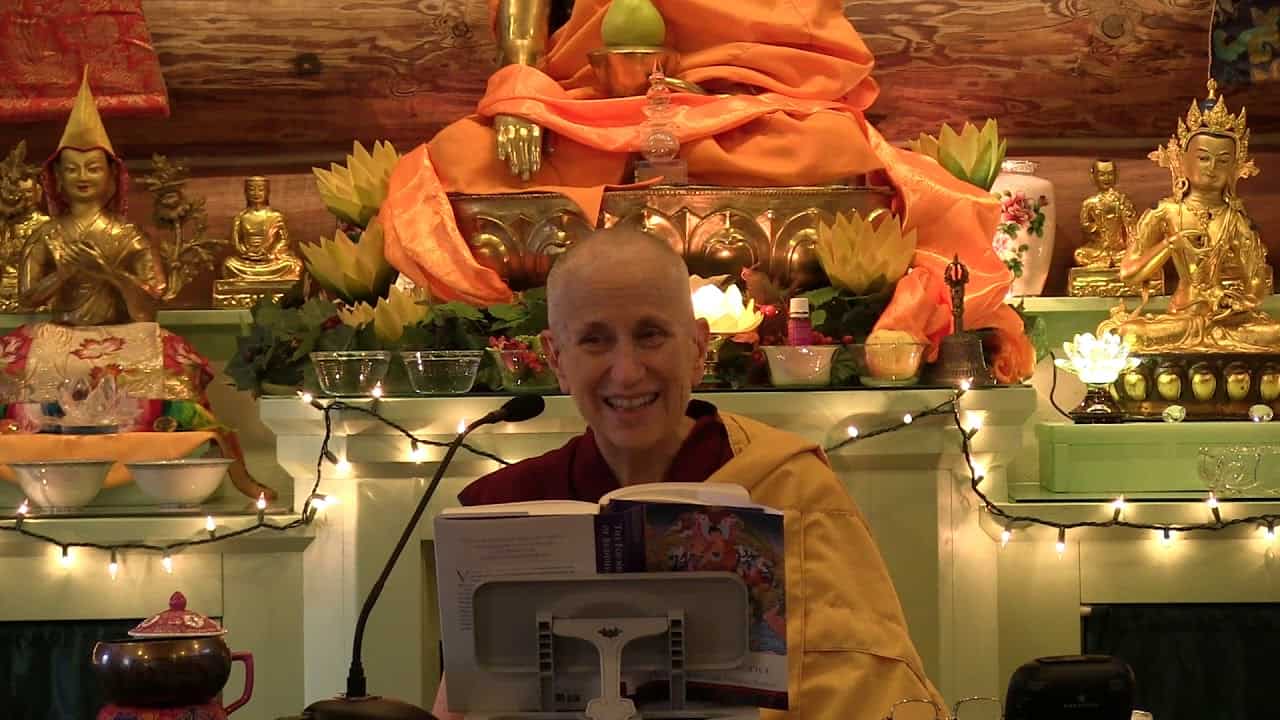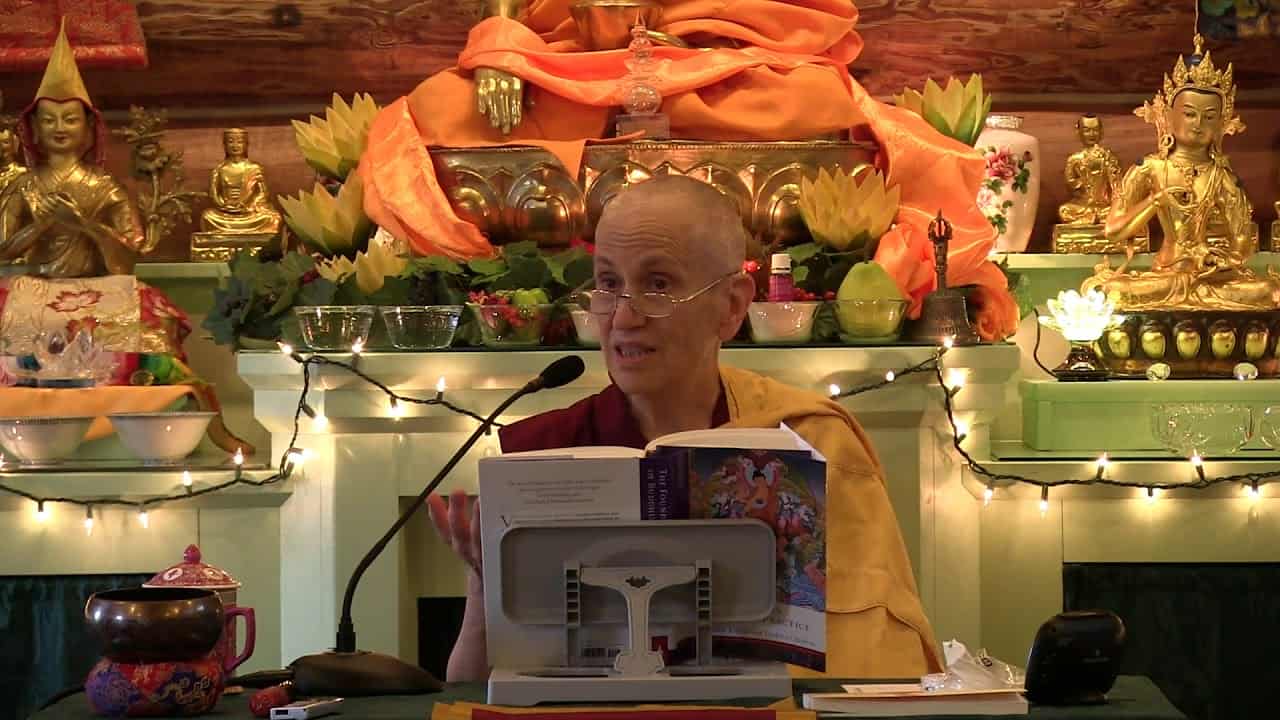Classification of phenomena
11 Foundation of Buddhist Practice
Part of a series of teachings given during a retreat based on the book The Foundation of Buddhist Practice given at Sravasti Abbey.
- Questions and answers
- How to continue practice away from the Abbey
- What is personality and how does it change?
- Meditation and syllogisms
- Chapter 3: the basis of the self, body and mind.
- Classifications of phenomena
- The five aggregates
The Foundation of Buddhist Practice 11: Classification of phenomena (download)
Contemplation points
- What is the definition of existent? What are synonyms? Make examples of things that are existent and those that are non-existent.
- What are the two types of existent phenomena? Describe each.
- What are some examples of permanent phenomena? Name some that are occasional and some that are non-occasional.
- Create a chart to document: What are the three types of impermanent phenomena? What is included in each of these categories? Make examples. Study this chart to deepen your awareness of these types of impermanent phenomena. Observe the world around (and inside) you and identify where each thing fits into the chart.
- One by one, identify each of the five aggregates that constitute you as a person. Be aware of your body. Identify feelings of pleasure and happiness, discomfort and suffering, and neutral feelings that are neither. Notice the discriminations you make, the moods and emotions you have, and the types of primary consciousnesses that are present.
- Identifying each aggregate in your own experience, contemplate their different functions and unique attributes.
- Contemplate the characteristics common to all five aggregates: they change moment by moment (impermanent), they are under the influence of afflictions and karma (dukkha by nature), they depend on other factors and are not a person (selfless).
Venerable Thubten Chodron
Venerable Chodron emphasizes the practical application of Buddha’s teachings in our daily lives and is especially skilled at explaining them in ways easily understood and practiced by Westerners. She is well known for her warm, humorous, and lucid teachings. She was ordained as a Buddhist nun in 1977 by Kyabje Ling Rinpoche in Dharamsala, India, and in 1986 she received bhikshuni (full) ordination in Taiwan. Read her full bio.


